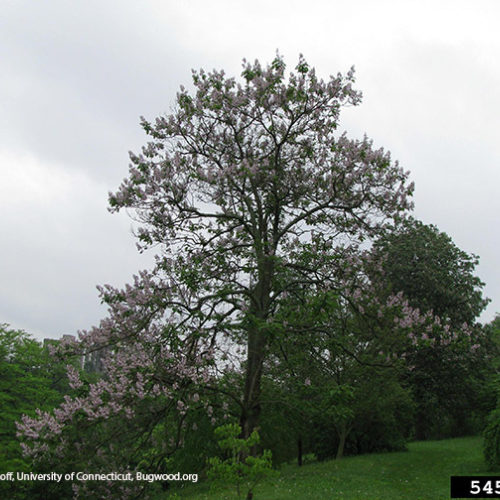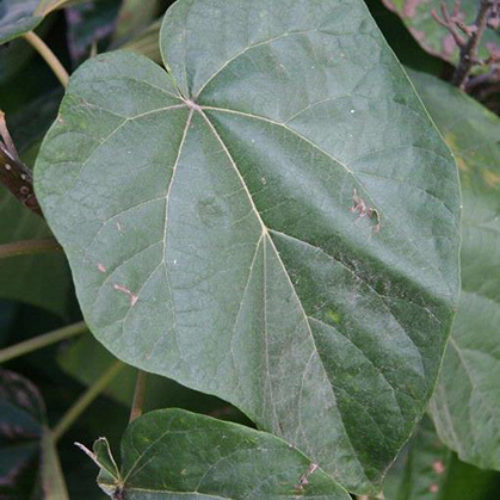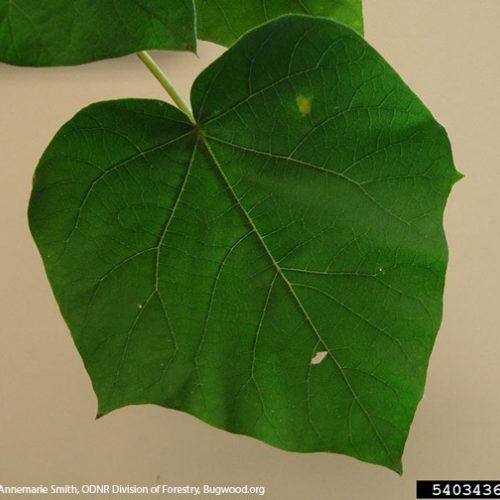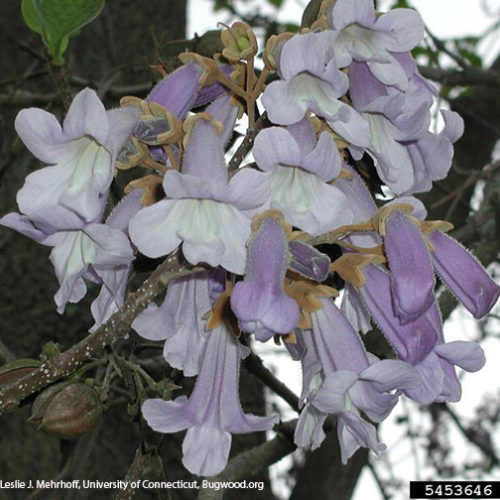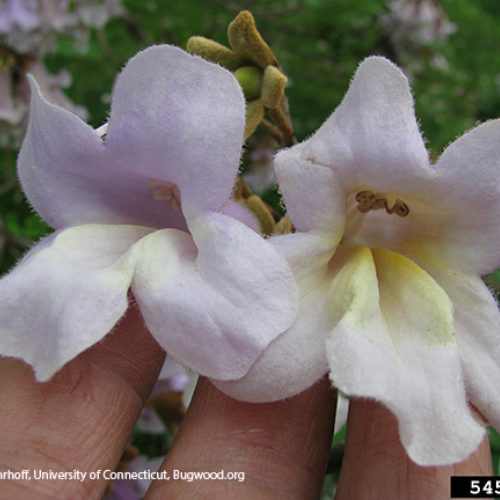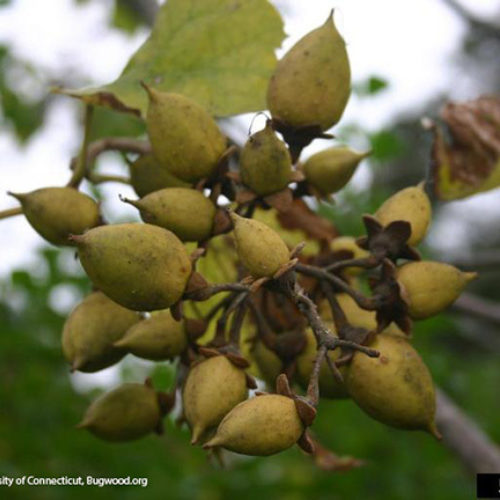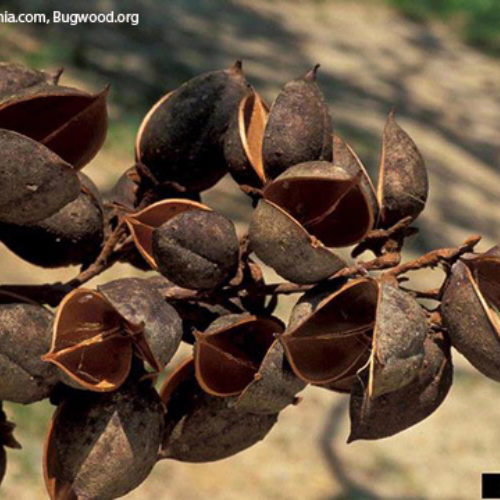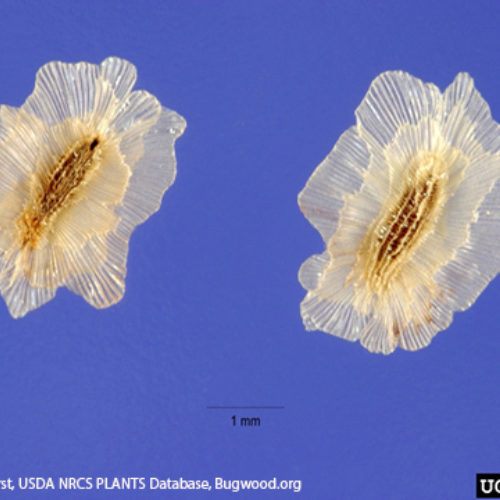Empress tree
Paulownia tomentosa
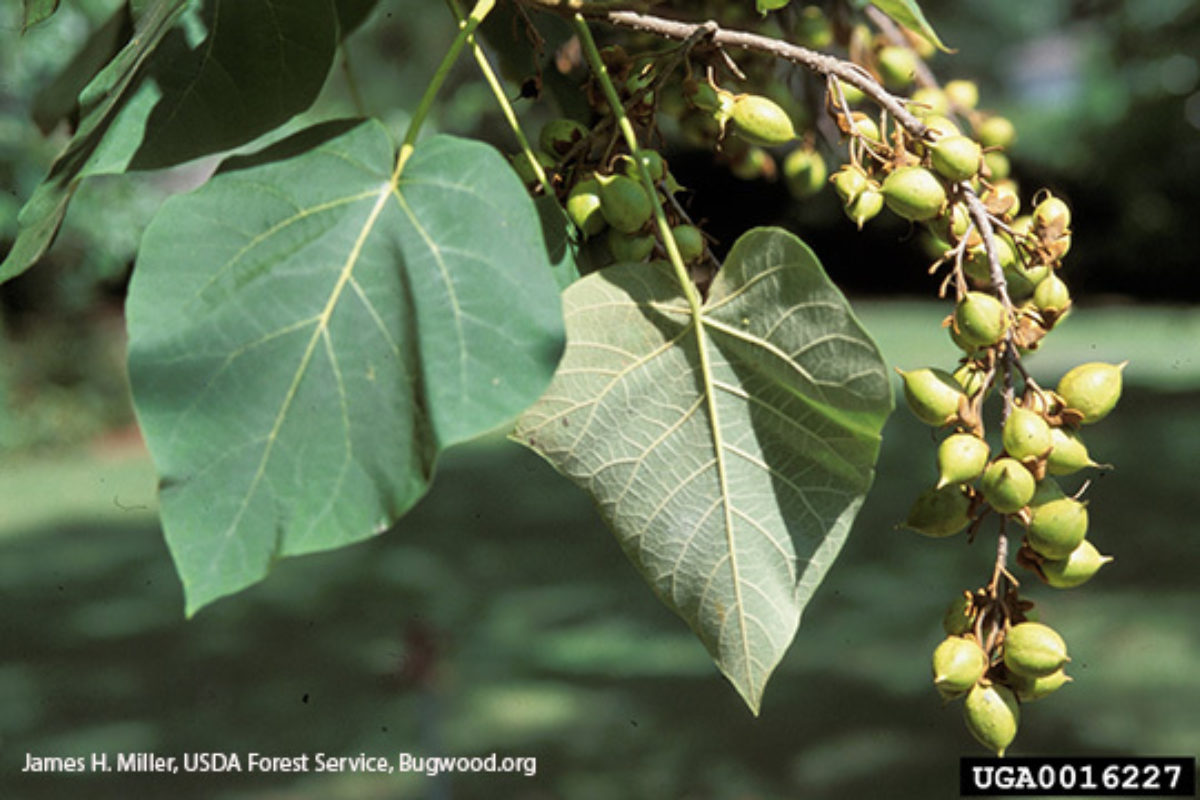
Family: Paulowniaceae
Other Common Names: Princess tree, royal paulownia
Weed class: monitor list
Year Listed: 2017
Native to: China
Is this Weed Toxic?:
not known to be
Why Is It a Noxious Weed?
This plant is on the monitor list - it is not a listed noxious weed in Washington. Please contact Danika Davis, with Gray's Harbor County Noxious Weed Control Board, to report locations of where plants are found growing outside of ornamental plantings.
How would I identify it?
General Description
Deciduous trees, typically growing 30 to 60 feet tall.
Flower Description
The flowers are in upright pyramidal clusters (panicles) of showy, fragrant flowers. The petals are fused in a tube that widens towards the tip, ending in 5 spreading lobes. Flowers are light purple with yellow markings inside and bloom before the leaves emerge. Flower buds are light brown, hairy spheres that can be found in the winter.
Leaf description
The leaves are arranged opposite each other on the stems. They are broadly ovate (egg) to cordate (heart) shaped. Leaves on adult trees are 6 to 16 inches long, not lobed to somewhat 3-lobed. Leaves are sparsely hairy above and densely hairy on their undersides. Stump spouts, suckers, may have leaves that are twice as large.
Stem description
Stems have chambered pith.
Fruit Seed Description
Capsules, hairy and glandular, maturing from light green to brown, with four chambers, containing up to 2,000 small winged seeds, 2.5 to 4 mm.
Where does it grow?
Planted as an ornamental tree species, princess tree has become invasive in parts of the eastern United States, notably some southeastern states.
How Does it Reproduce?
Plants spread by seed and by root suckering.
How Do I Control It?
Adult trees can be cut down at the soil surface, but will then require followup herbicide treatment to prevent resprouting. Repeated cutting can eventually work, if done continually.
For More Information
Oregon State University Landscape Plants: Paulownia tomentosa information
Information from the Southeast Exotic Pest Plant Council Invasive Plant Manual
Plant Conservation Alliance's Alien Plant Working Group fact sheet on princess tree



